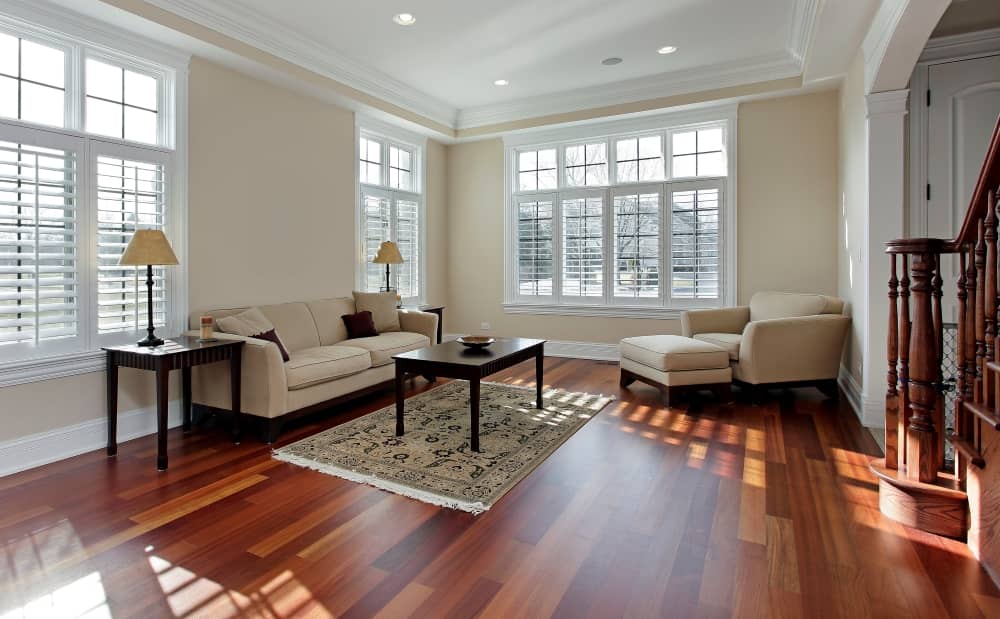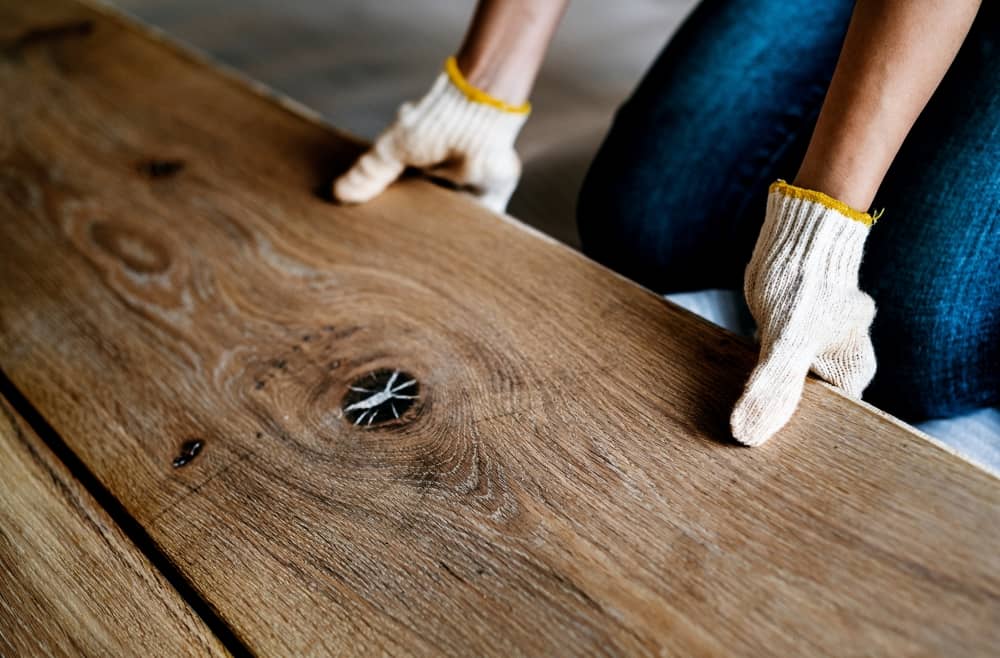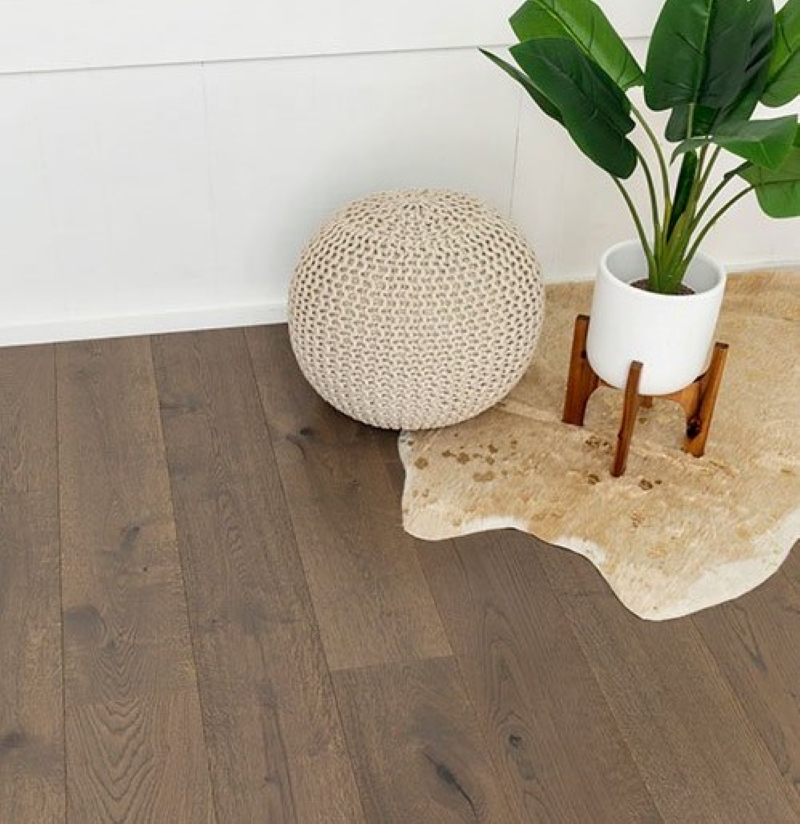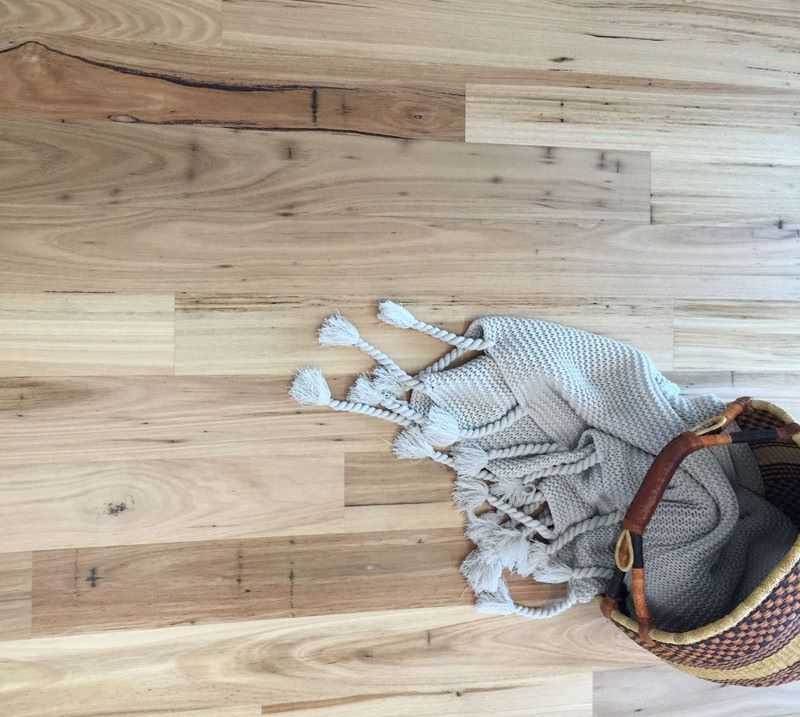Sustainability has become an increasingly important consideration over the past few decades. Choosing sustainable flooring materials is a great way to create a healthier living space for you and your family and better for the environment. That said, all options on our website, whether labelled sustainable, non-toxic or eco-friendly flooring, meet rigorous Australian eco standards.
This post identifies various sustainable, non-toxic flooring options that minimise environmental impact. These flooring choices will better align with your eco-values.
What are Eco-friendly Flooring Materials
When it comes to eco-friendliness, non-toxic & sustainable flooring, we feel some factors can place a flooring product under the umbrella:
- Renewable and Natural Materials: Eco-friendly Flooring should be derived from natural, renewable resources. This means it can be regrown and replenished quickly and faster than consumed.
- Recycled or Reclaimed Materials: Sustainable Flooring often uses repurposed and recycled materials. This means they are diverted from becoming waste and reduce the need to produce new products. Examples include reclaimed timber flooring, repurposing flooring scraps, and even recycled carpet tiles that can be manufactured from plastic bottles or nylon fibres.
- Low Environment Impact: The flooring product should have a minimal environmental impact during manufacturing and its life cycle. This includes energy production, carbon emissions, water usage, and waste as a byproduct. This reduces the risk of respiratory issues and allergic reactions.
- Non-toxic and Low VOC Emissions: Non-toxic flooring in Australia should not affect indoor air quality or human touch.
- Durability and Longevity: An eco-friendly flooring option must be durable and have a considerable lifespan, requiring minimal maintenance and replacement and contributing to waste.
- Energy Efficiency: As an isolated example, concrete floors can contribute to energy efficiency in homes by retaining radiant heat. This is true particularly when combined with underfloor heating, reducing the energy costs of additional heating.
- Responsible & Ethical Manufacturing: This means being mindful of the manufacturer/supplier’s processes regarding sustainability, renewable energy, waste reduction and fair labour. Certifications and memberships to ethical and sustainable organizations or lack of often leave clues.
After reading the above, few products available to the public qualify in these areas.
That being said, some flooring products below do or at least come very close to ticking all the boxes:
Sustainable, Environmentally Friendly & Non-Toxic Flooring Materials
We chose some categories below we felt were evident to DIYers and customers. Some other choices will require you to read on to understand what makes them non-toxic or sustainable.
Bamboo – The Sustainable Natural Product
As expected, bamboo flooring makes the cut due to its rapid growth, renewability and sustainability. This product is aesthetically pleasing, durable, versatile and comparable to traditional timber floors. This flooring type is available in various finishes and colours, which will fit many home interiors. Maintenance is minimal, with the bonus of bamboo being it’s resistant to moisture and pests. Additionally, the Moso species of Bamboo used in flooring is not the bamboo that Pandas eat.
| Pros | Cons |
| Durable | Moisture/humidity damage can still occur |
| Sustainable | Limited colour choices compared to some hardwoods |
| DIY installation | |
| Low maintenance |
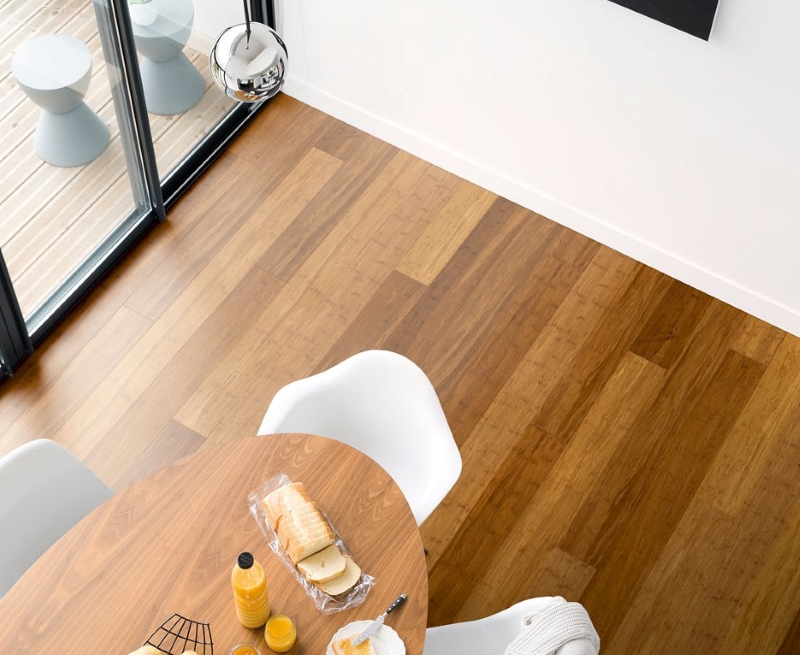
Trees Regrow Their Cork When Harvested for Flooring
Cork is harvested from the bark of oak trees, causing no damage. This gives a whole new meaning to the use of Oak flooring products. This product has exceptional insulative properties, is comfortable for walking barefoot, and reduces noise underfoot to a minimum. It is also resistant to mould, mildew, and insects, making it very hygiene-friendly. It is available in various styles and colours, including tiles and planks, giving it versatility in applications from room to room.
| Pros | Cons |
| Durable | Moisture damage can occur |
| Refinished easily | Colour can change rapidly with sun exposure |
| DIY installation | It can be indented by very heavy objects |
| Low maintenance |
Reclaimed Hardwoods
Reclaimed hardwood flooring is a great eco-friendly way to add character and charm to your living space. It can be salvaged from various structures, allowing you to enjoy the beauty and uniqueness of aged wood. It also reduces the need for new timber and conserves natural resources. If well-cleaned, acclimatised, and maintained, the durability and strength of hardwood flooring ensure longevity for decades to come.
Refinishing old timber floors can mean discovering a hidden gem in your home. Some rare hardwood floorboards are found under paint, carpet, or decades of wear and tear. Sanding and polishing timber floorboards can turn an eye-sore into a showpiece quickly, making it a terrific sustainable option. Homes with pristine solid timber floors can have a higher resale value.
| Pros | Cons |
| Very acclimatised older timber | Long preparation & salvage time |
| Extra look and texture | Limited amount |
| Durable | Can be expensive to prepare |
| Can be hard to find |
Showcasing the Beauty of Timber Using Engineered Flooring
Engineered Timber flooring is an excellent option as it uses up to 1/6th of the slow-growing hardwood compared to solid timber flooring. Additionally, Micro-veneer timber floors can create more than 20 times more flooring than a solid timber floor can. Engineered flooring comprises multiple layers, and sub-layer timbers are purpose-grown plantation timbers, which grow faster than the top surface layer. Hardwood trees are very slow growing, so engineered timber flooring drastically reduces the amount of these trees required per square metre of flooring produced.
In addition, engineered flooring products are more stable in expansion and contraction than solid timbers. This is because sub-layers prevent excessive expansion and contraction.
| Pros | Cons |
| Reduces the amount of slow-growth trees needed | Susceptible to water damage |
| Look and feels the solid timber | More maintenance requirements than vinyl or hybrid |
| Durable & strong | Less capacity for refinishing with the veneer |
Natural Composition of Ceramic Tiles
Made from natural materials such as clay and sand, ceramic tiles are environmentally friendly and non-toxic. They have a long life span and are resistant to scratches and moisture. They can withstand heavy foot traffic, making them suitable for kitchens, entrances and hallways. At the end of their lifespan, they are also recyclable. Ceramic tiles require little maintenance, requiring sweeping and occasional mopping.
| Pros | Cons |
| Durability – can withstand heavy wear and tear | Hard underfoot |
| Water-resistant | Cold underfoot & poor thermal conductivity |
| Low maintenance | It’s complex to install. Improper installation can lead to a host of problems. |
| There are many designs to choose from | Can crack & chip under heavy impact |
| Stain resistant | Costly compared to some other flooring options, such as vinyl or laminate. Installation is also expensive. |
Making Solid Timber More Sustainable
Timber can be considered sustainable as it can be regrown. However, some wood is easier and faster to grow than others, and illegal logging of slow-growing desirable timbers is a real problem. It is important to ensure timber is not sourced from clear-felled rain forests in less regulated countries. Importers and processors must abide by rigorous standards to ensure the wood is legally, sustainably and ethically produced.
The following sources are great resources related to sustainably sourced timber:
- The Green Peace Good Wood Guide
- Look for FSC-certified products which aim to prevent the logging of conservation forests worldwide
- Australian Forestry Standard Certified (AFS)
- Good Environmental Choice Australia
Frequently Asked Questions About Eco-Friendly Flooring
Yes - engineered timber uses up to 1/6th of the slow-growing hardwood compared to solid timber. The core layers are made from fast-growing plantation timbers, while only the top veneer uses precious hardwood. Micro-veneer options are even better, creating 20 times more flooring from the same amount of hardwood. Engineered timber is more stable, meaning less waste from warping or expansion issues.
Bamboo flooring combines sustainability with excellent durability. It's harvested every 3-5 years without killing the plant (compared to 20+ years for hardwood trees), and modern bamboo flooring is as durable as many traditional hardwoods. The Moso species used for flooring is particularly hardy and isn't the type pandas eat, so no wildlife impact. Just ensure proper installation and avoid excessive moisture exposure.
Look for products with FloorScore® or Green Tag certification in your price range. For moderate budgets, bamboo offers the best combination of sustainability and affordability. For tighter budgets, consider reclaimed timber flooring, while initial sourcing can be tricky, it's often cheaper than new materials and has zero environmental impact. Local salvage yards and renovation sites can be excellent sources.
Look for specific certifications rather than just "eco-friendly" claims. The key ones are FSC certification (Forest Stewardship Council), AFS (Australian Forestry Standard), and Good Environmental Choice Australia. These ensure the timber wasn't illegally harvested from rainforests or conservation areas. Also, check if the supplier can provide documentation about the timber's origin and harvesting methods.


